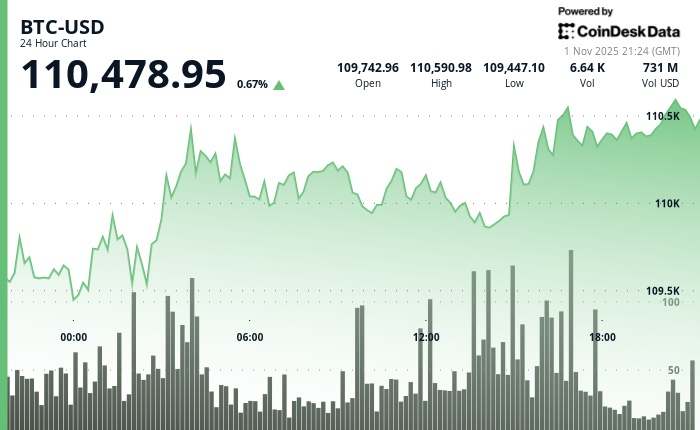Markets

What to know:
- The 42.5% November “average” is just a simple mean since 2013, and it’s mostly propped up by 2013’s ridiculous 449% gain. The median is around 9% (much more reasonable, frankly).
- November’s outcomes vary more than your mood swings, including double-digit losses AND gains, so let’s not get carried away thinking it’s a golden trading signal.
- “Moonvember” is trending on X (because, of course, it is) after a somewhat “meh” October. But keep in mind, people are using “seasonality” as the context, not as a crystal ball for trading.
Crypto analyst Lark Davis insists November is Bitcoin’s “strongest” month with an average gain near 42%. But hold on, that number is skewed by one outrageous outlier (thanks, 2013). The median is a far more modest 9%. So, maybe let’s not start buying yachts just yet.
Where ‘Uptober’ and ‘Moonvember’ come from
Oh yes, the language of crypto. “Uptober” is the cheeky way to say October usually rallies after a summer of confusion. It gets especially popular when October actually does rally hard, like some magical crypto fairy dust.
“Moonvember,” though, that’s the sequel. It’s for the traders and influencers who’ve dusted off their “moon” memes to cheer for a year-end rally. They appear every autumn like clockwork-whether or not the market decides to cooperate.
The terms are part meme, part marketing. But let’s be real, they always reappear, even if the market is just chilling.
What the CoinGlass heat map shows
CoinGlass gives us a monthly returns heat map, showing November’s “average” return in the low 40s. But don’t get too excited. That number’s a bit of a magic trick, mostly inflated by 2013’s 449% spike. If we look at the median instead (a more sensible number), we’re talking a humble 9%. That’s what the typical November looks like, folks.
Range and recent history
November is like the weather in England-unpredictable. You get everything from dramatic losses (hello, 2021 and 2022) to massive gains (hi there, 2024) and everything in between. That’s why saying “November is strong on average” is a nice history lesson, but don’t count on it for future predictions.
Seasonality in context
When citing seasonality, remember to mention both the mean and the median, along with the full range of possibilities. Because, you know, just using an average like 42% and saying “this is what’ll happen” is a bit like predicting the weather based on a sunny Tuesday.
In reality, traders often wait for confirmation from the charts-broken levels, volume changes, you get the drift-before they get excited about the calendar effect. Because let’s face it, charts don’t lie. (Unless you’re in a hurry.)
What analysts are saying on X
Some crypto enthusiasts revived “Moonvember” after a rare “red” October, pointing to the heat map’s optimistic November mean. But, surprisingly, many analysts echoed the same caution: the mean might look juicy, but the median is far more realistic. The market still needs to prove itself. So, maybe hold off on buying that second Lambo?
Read More
- The Most Jaw-Dropping Pop Culture Moments of 2025 Revealed
- Ashes of Creation Rogue Guide for Beginners
- ARC Raiders – All NEW Quest Locations & How to Complete Them in Cold Snap
- Best Controller Settings for ARC Raiders
- Where Winds Meet: How To Defeat Shadow Puppeteer (Boss Guide)
- Where Winds Meet: Best Weapon Combinations
- Ashes of Creation Mage Guide for Beginners
- Hazbin Hotel season 3 release date speculation and latest news
- My Hero Academia Reveals Aftermath Of Final Battle & Deku’s New Look
- 5 Most Exciting New Switch 2 Games Confirmed for 2026 (So Far)
2025-11-02 01:09